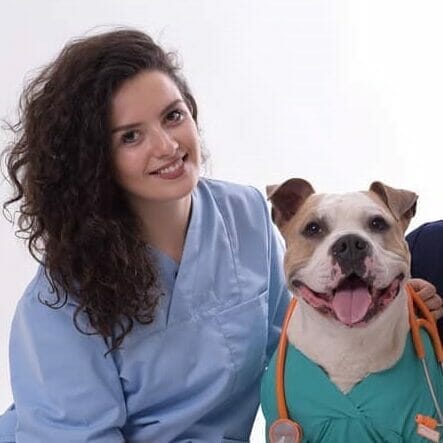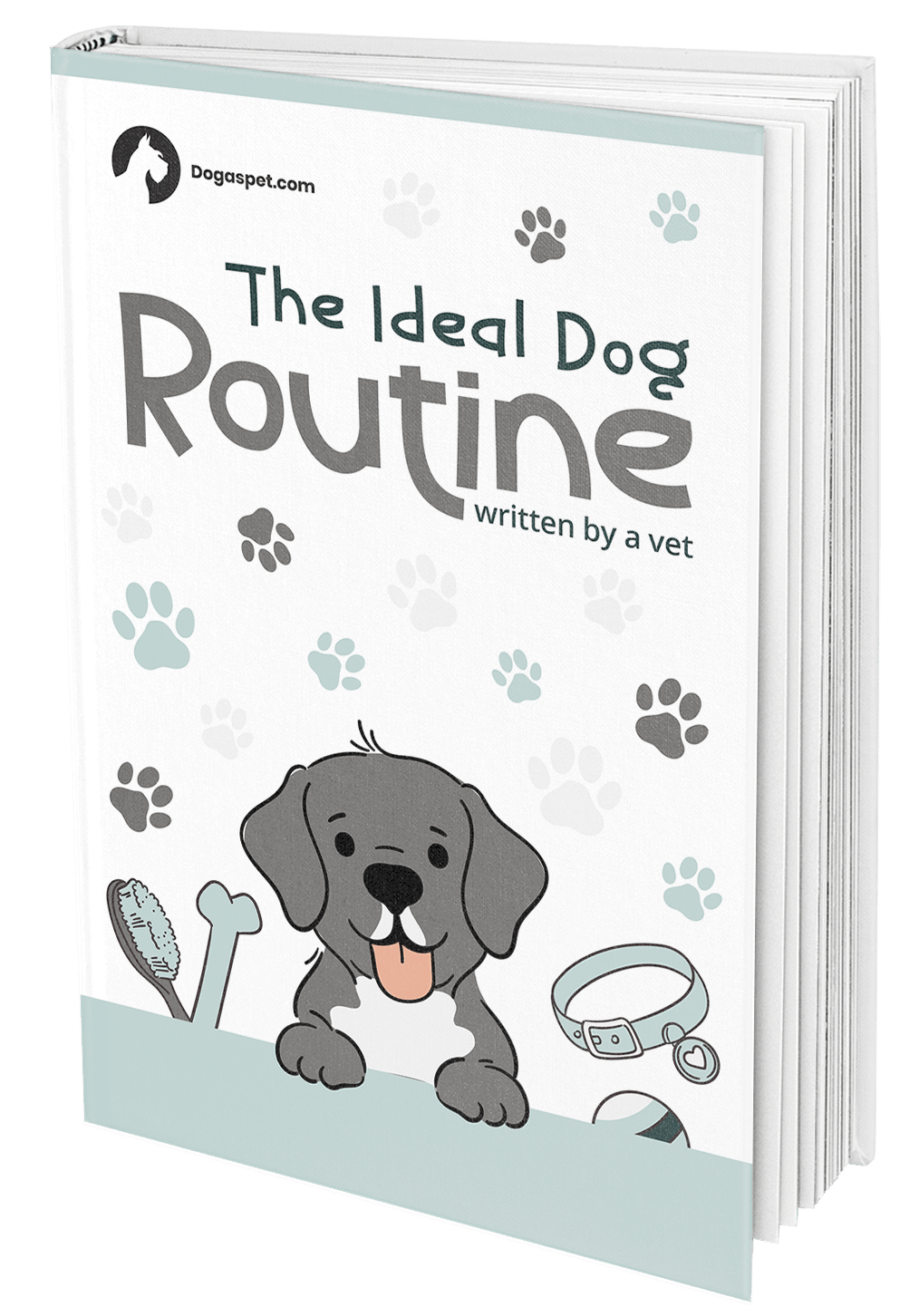
The fear of seeing your dog helpless under anesthesia makes your heart ache, no?
While dog anesthesia is generally safe, and vets take additional precautions before putting dogs under anesthesia, it’s not risk-free.
We all know that some complications may occur, and even though it’s rare, there is still a slight chance that something could go wrong.
If you are afraid of the whole anesthesia procedure, knowing about the possible side effects dogs might face after waking up is better.
First, Is Dental Care even Important in Dogs?
Owning a dog is not just cuddles and smooches but a real responsibility, more like caring for a kid and being by their side for any underlying problem that might occur during their life.
Dental care is the most difficult one to manage. While some dogs are cooperative and stay while you clean their teeth and enjoy the smell of vanilla-flavored toothpaste, others are unwilling to cooperate, running from the toothpaste and the brush as if it’s their worst enemy.
And naturally, while the former have stellar dental hygiene and require only dental check-ups, the latter need to visit a teeth cleaning professional.
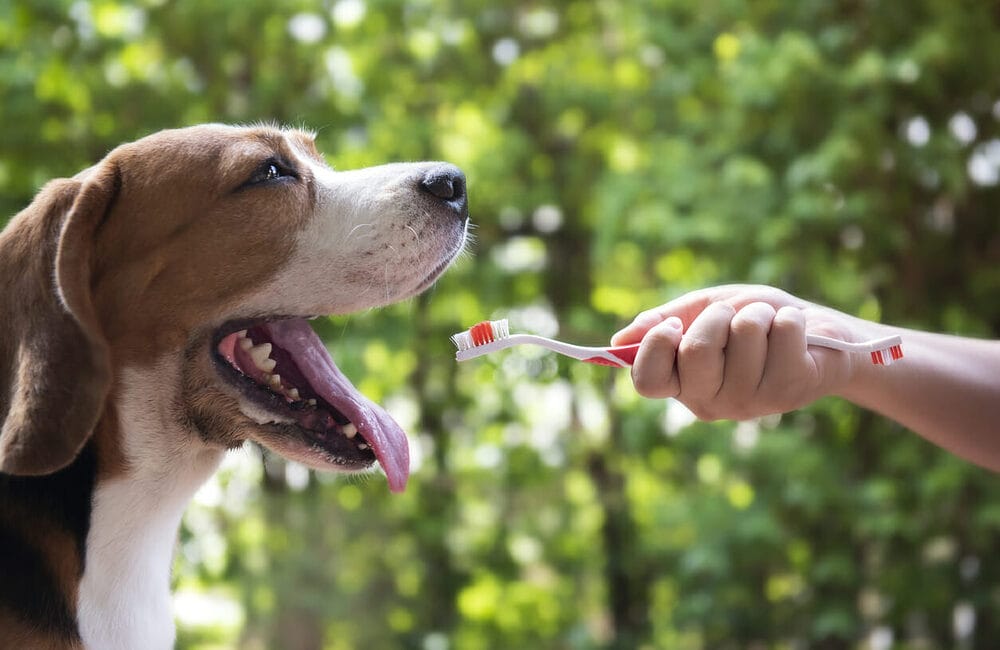
Dental disease as a breeding ground for bacteria
But just how important is proper dental care? Unfortunately, there’s evidence explaining that improper dental care could lower the dog’s lifespan by up to two years.
Dental disease is often a breeding ground for bacteria which can spread throughout the dog’s body, weaken the organs, and affect the immune system. More often than not, if some underlying dental problems are not properly approached, it can lead to tooth decay and loss, known as periodontitis.
Remember, even what we call dog breath indicates some dental problems. Bad breath often occurs when there is a tartar build-up and requires an immediate veterinary check-up to determine the cause of bad breath.
When dogs lack dental care, they might be reluctant to eat, as chewing the food can be pretty painful. Also they might seem more lethargic than usual.
Dog Teeth Cleaning Anesthesia Side Effects
Low blood pressure, vomiting, lack of appetite, diarrhea, bleeding, lethargy, nausea, coma, and loss of hearing are some side effects that could occur when dogs are put under anesthesia while professionals remove the tartar build-up. Although rare, these side effects can occur.
So to help you understand each possible side effect, let’s discuss it in more detail.
Low blood pressure
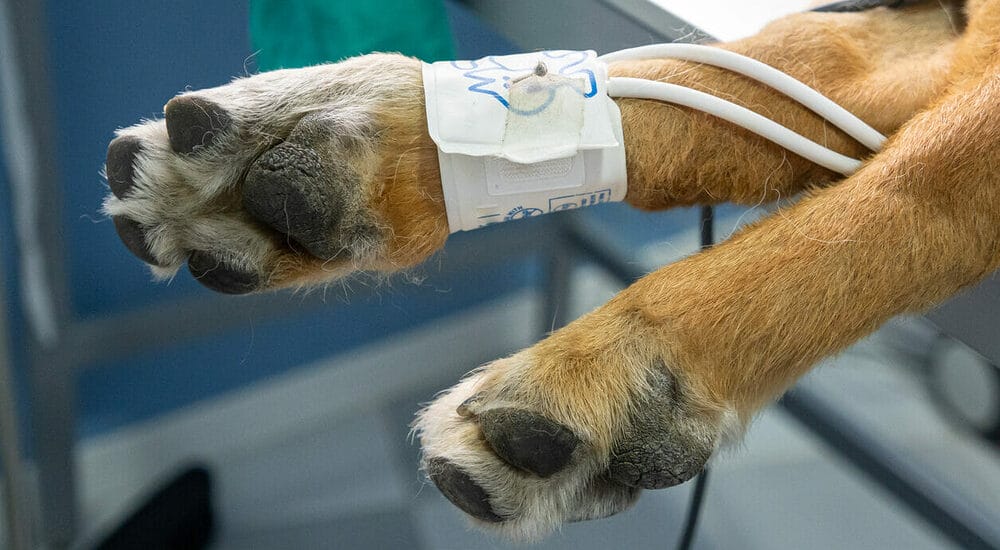
Hypertension is the most common side effect for dogs put under anesthesia, often affecting seniors. But young, healthy dogs are not immune to it. Unfortunately, many things could cause low blood pressure after administering the anesthesia, one of the most frequent reasons being an allergic response to the anesthetic.
However, bleeding, excessive anesthetic dosage, and some untreated cardiac diseases can cause low blood pressure.
If this happens, your dog needs immediate care. Often intravenous fluids (IV) are administered, and the vet minimizes the anesthetic dosage.
Vomiting
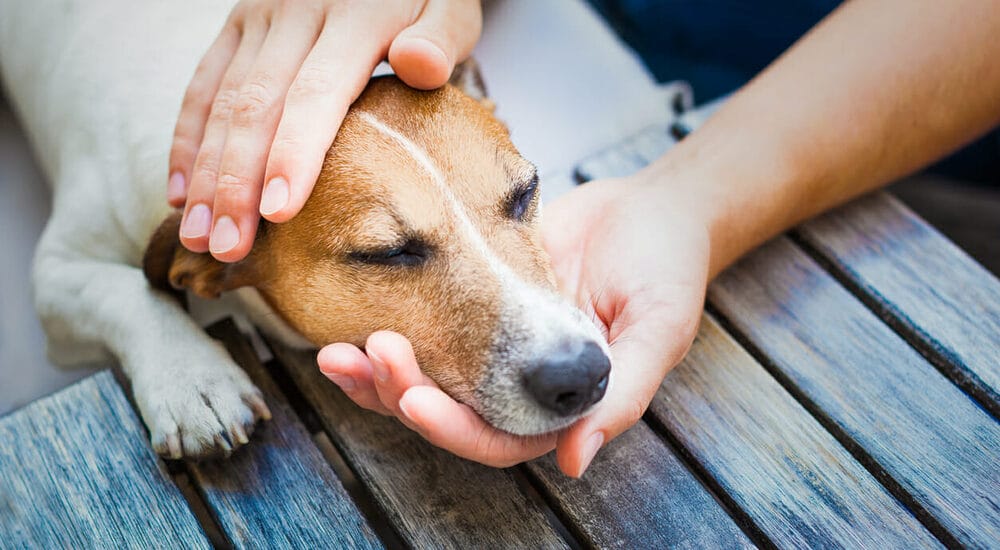
Vomiting can be another side effect of the anesthesia. Often, dogs can be nauseous after a procedure requiring a general anesthetic. This can happen if the dog hadn’t followed a strict diet prior to the dental care or if it experienced adverse reactions from the anesthesia.
Whatever the reason, vomiting after anesthesia is unsafe as there is a risk of aspiration. This means that food can enter the lungs and lead to a more severe condition- aspiration pneumonia.
If it persists, contact the vet immediately.
Diarrhea

It’s not uncommon for your dog to experience an upset stomach after waking up from anesthesia. This might occur because of stress, changes in their body position, pain, and the anesthetic dose.
If your dog has diarrhea after teeth cleaning, consult your veterinarian. Even though this side effect lasts a couple of hours to a day, it is better to be safe than sorry later.
Bleeding
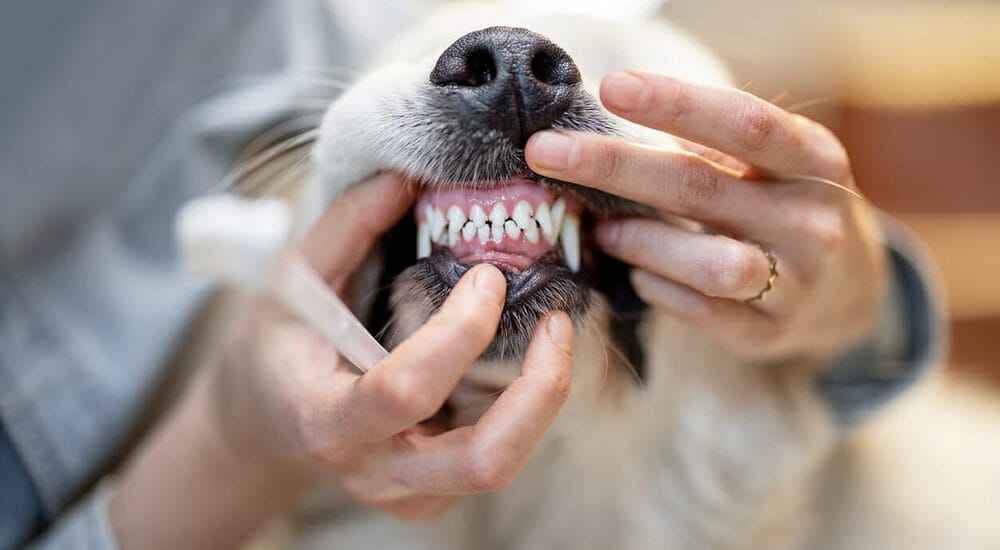
Some dogs may be bleeding after tooth extraction. After all, teeth extraction is a surgery, and some blood in the dog’s saliva is completely normal. Swelling and pain are also common symptoms.
Although common, the bleeding should stop after some time, and the immune system needs to form a clot where the tooth was extracted.
Contact the veterinarian immediately if you notice increased bleeding or drooling lasting more than eight hours. Worst case scenario, it might be a surgery gone wrong.
Coma
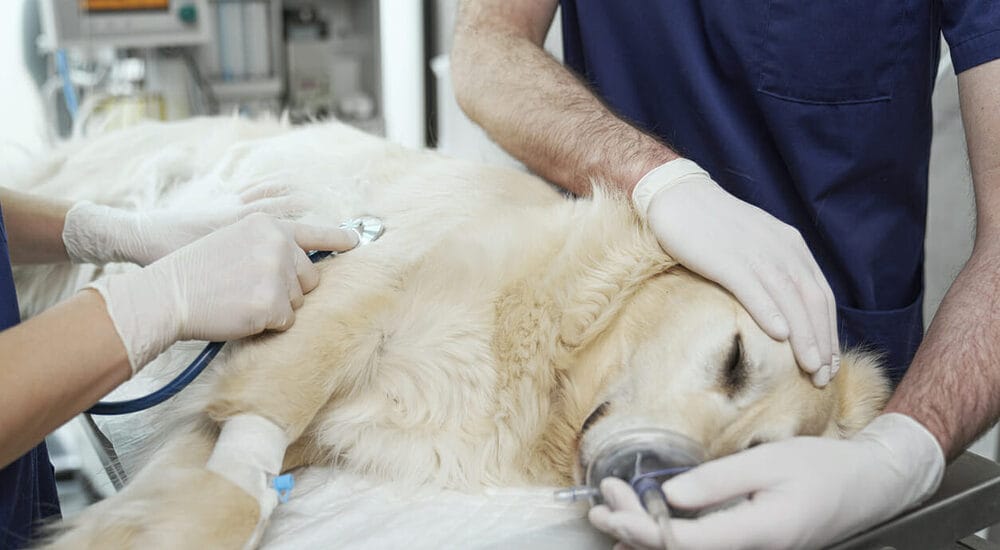
Probably the scariest side effect that dogs could experience after receiving general anesthesia during dental care is a coma. As you know, a coma is a condition of unconsciousness where the individual, the dog in this case, is alive but unable to move and lacks perception.
Large doses of anesthetic drugs could be the culprit behind causing harm to the reticular activating system (RAC), which is responsible for regulating consciousness.
What Factors Affect the Side Effects of Anesthesia?
Dog size, breed, age, and health are among the most common factors that impact how the anesthesia reacts. Some dog breeds are prone to a greater anesthetic risk. Such breeds are French bulldogs and Pugs because of their breathing difficulties.
What Happens After the Dental Procedure?
Just as you need to submit certain test results, including blood tests, and a full panel that ensures your dog is safe and sound, you need to know what happens after the dental procedure.

If your dog is lucky enough only to get their teeth cleaned up, without teeth extraction, there’s not much to do after the procedure. All you can do is wait for a few hours until the anesthesia wears off to take your dog from the hospital and bring them home in a safe and peaceful environment for a full recovery.
If there was a tooth extraction, your dog would be prescribed antibiotics and painkillers upon discharge.
Regardless of whether there was a tooth extraction or not, expect the dog’s mouth to be sore for the next couple of days. If extraction took place, it’s safe to say that the soreness might persist for up to five days.
What to feed a dog after dental cleaning
Once your dog is settled at home, feed them a small meal and offer about half the usual water intake to prevent vomiting, nausea, or diarrhea. After all, the dog is still sensitive from the anesthesia and might feel drowsy or disoriented.
The next day, and the days after, try gradually implementing wet food to prevent the gummies from further irritation.
How to care for a dog after tooth extraction
While most dogs make a full recovery after a couple of days, they might need to rest and take antibiotics as directed.
If you care for an older dog, remember that a senior dog’s tooth extraction recovery path is just the same as that of a younger dog.
Regardless of the dog’s age, pet owners need to pay attention to the following instructions for a fast and safe recovery.
Let your dog rest
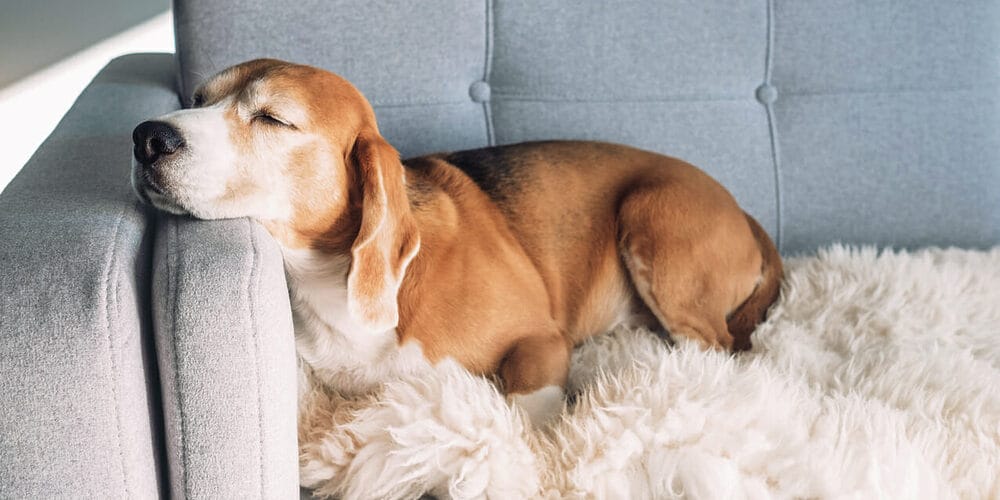
Make sure your dog is in a warm, safe, and comfortable environment, especially during the first day after teeth extraction.
It’s normal for the dog to be lazy and refuse to eat for the first 14 hours. But if the symptoms persist, be sure to contact the vet, so they can act accordingly to the situation.
Antibiotics and painkillers
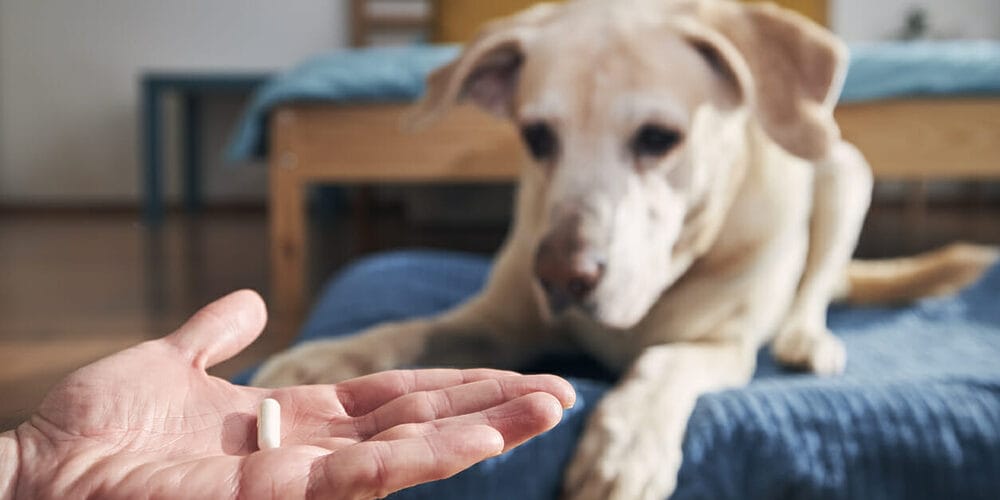
Before the discharge, your dog will likely be prescribed some antibiotics to treat the infection and painkillers to ease the pain. After all, there’s a wound in the dog’s mouth that requires proper care.
But before you take matters into your own hands, consult the veterinarian regarding the proper dosage, and read the packaging for any adverse effects.
Should your dog refuse to take the pills, you could try hiding the pill in certain foods or use pill poppers to ensure the pill’s effectiveness.
Appropriate diet

As mentioned above, try feeding your dog with wet, semi-moist food, or pour hot water under the dog’s normal, dry food.
Kibble food might irritate the inflamed gummies and the teeth wound, so it’s best to stick with a strict regime until the surgical site has healed properly.
Remember to keep an extra eye out during the recovery period as dogs hide that they are in pain. You should keep an eye out for the following:
6 Signs That You May Want To Keep An Eye On:
- Drooling
- Bad breath
- Lack of appetite
- Disinterest in toys
- Aggression
- Disorientation
FAQ – Frequently Asked Questions
You may have a few questions before we wrap things up; here are some of the most frequently asked:
Can a 14-year dog receive dental care?
Of course. Age shouldn’t be a problem when it comes to maintaining the dog’s overall health. And even though it doesn’t present a high risk, it is riskier than putting a younger dog under anesthesia.
What do you need to do prior to the dental procedure?
Prior to the dental procedure, you need to have blood drawn up, and a full-check up to ensure that your dog is healthy and no serious adverse effects can happen.
Why is my dog very sick after teeth cleaning?
Although it’s common for your dog to feel drowsy or have an upset stomach in the first few hours after the procedure, if the adverse symptoms persist for more than 24 hours, it’s time to consult your vet. Some complications might have occurred.
In Conclusion – Keep An Eye On Your Dog
Now that you know all the possible side effects from anesthesia after dog teeth cleaning, keep an extra eye out the next time you bring your dog for a dental check-up.
Always inform the teeth cleaning professional about any health conditions your dog has so it treats and administers the anesthesia accordingly. Should anything go wrong, your vet will take every possible measure to help your dog stay on its four feet.
Does your dog like having their teeth cleaned? Are there other side effects we failed to mention? Let us know in the comments below.
